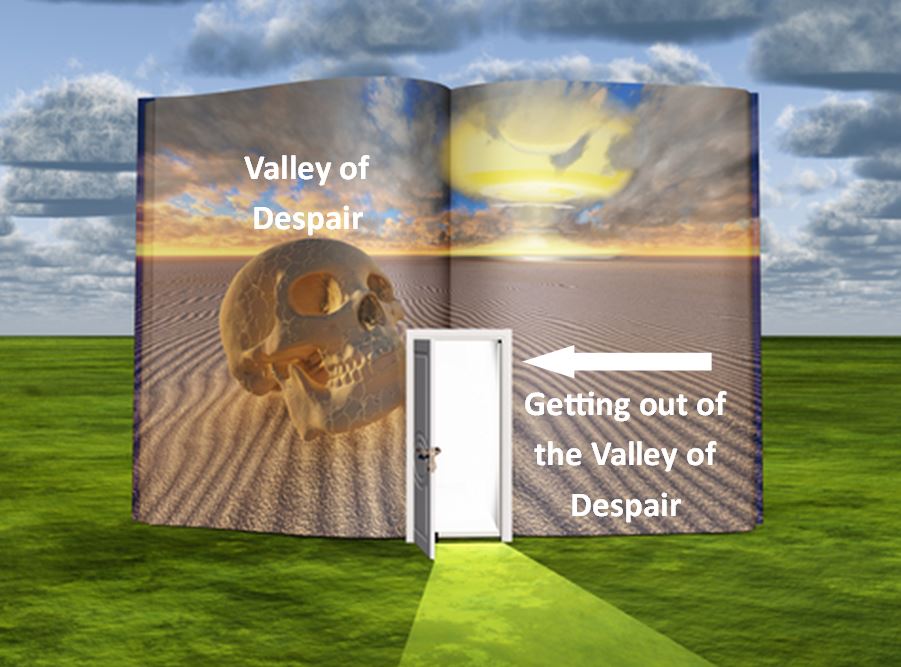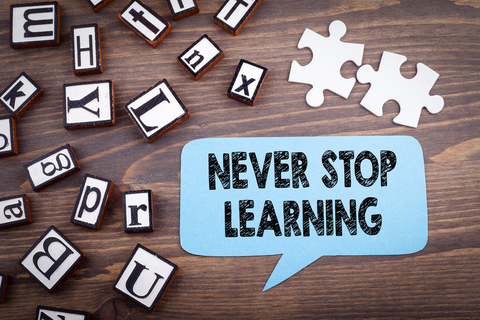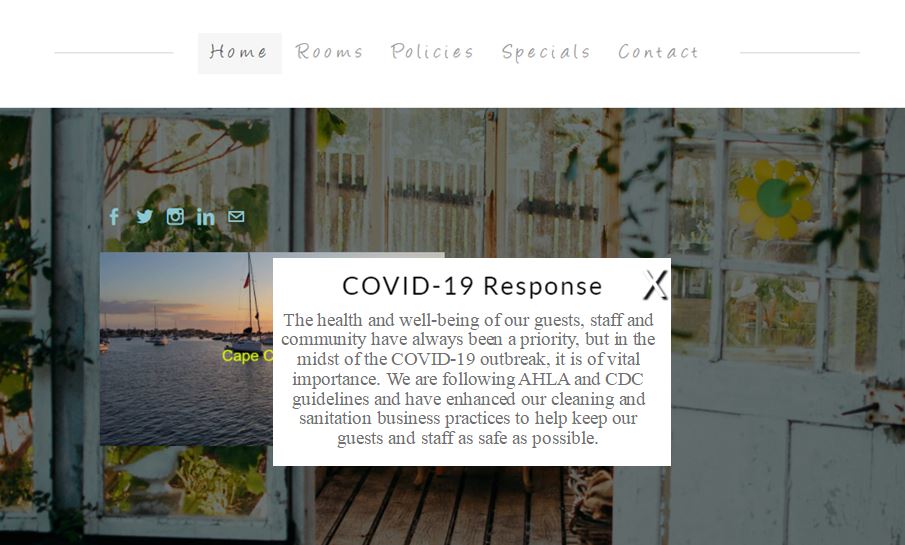by Heather T. | May 19, 2022 | Business, Opinion

The Valley of Despair, seems so ominous, doesn’t it?
Well it is, actually. But it’s a step, and it leads up, or it leads down permanently, depending on how you approach things.
It’s a term I have found usually used in project management and change management, also called the Emotional Cycle of Change, a model developed by psychologists Don Kelly and Darrell Connor, the curve has been modified a bit by many, including myself. If you Google the cycle you will come up with a variety of graphs, my personal favorite is from evocon, which I think sums it up perfectly (scroll down about half way down the page). Somewhat similar to Kübler Ross’ Change Curve, which talks about the five stages of grief, where the curve starts high, drops into a valley and then rebounds. I find the cycle particulary applicable to people trying to start a new business.
If you Google “Valley of Despair”, you will also come across the Dunning-Kruger Effect, which explores the cognitive bias people have on assessing their own ability. This is no relation other than using the same terminology.
Before I touch on the five stages of the cycle, I have found that there are three types of people who want to start businesses, and while it’s a little bit of a generalization, I find it’s pretty accurate.
1. The ones who have a dream (to start a business) and have motivation.
2. The ones who have a dream (to start a business) and have done their homework first.
3. The ones who would like to be their own bosses or whatever they feel is the reasoning behind thinking they want to own a business and have an idea, but no real motivation (other than the dream) and have not done any homework.
#1 & #2 are the people who usually start businesses and do well. #3 rarely makes it out of the Valley of Despair and almost always quits at the low point. But that can be changed with the right attitude, and researching and reassessing.
The five stages of the cycle:
The first stage is Uninformed Optimism: otherwise known as hope and excitement “I’m going to be my own boss!!”
The second stage is Informed Pessimism: otherwise known as reality starts to kick in. “Oh My Heavens, there is so much to do! So much to learn! Arrgggghhhh!!!!”
The third stage is The Valley of Despair: otherwise known as “abandon all hope who enters the cave of doom”, cue evil laugh from the shoulder devil who doesn’t want you to succeed and whispers in your year, “You can’t do it.” This is where a lot of entrepreneurs give up. It’s too hard, it’s taking too long, it costs too much.
The fourth stage is Informed Optimism: where people who have clawed their way out of the pit put into practice all the things they learned they had to do to start their business.
The fifth stage is Success: where people start their business, open their bakeries, auto repair shops, or coaching businesses, whatever their dreams and aspirations are.
I’ve found working with startup businesses that these are some of the best ways to get out of the Valley of Despair.
Reach out for help. There are so many free resources out there for startup businesses. SCORE, for one. My suggestion (as a SCORE mentor) is when you are requesting help, tell the Chapter (there are Chapters all over the United States) a bit about what you are looking for and what kind of help you need. It helps the Chapter better match you with someone who can assist you. If you are matched with a mentor who you don’t click with or does not have the skill set you need, you can ask them to pull in a co-mentor or co-mentors with those skill sets and expertise. Or you can request someone else. This is a person you will be sharing personal and business information with, and there is a big trust and relationship aspect to it, so it needs to be the right fit.
I would be remiss in not mentioning a few of the other resources out there. There are also state-level programs, so use Google. It’s your best friend when it comes to starting a company.
Small Business Administration (SBA)
SBA’s Ascent: Explore Ascent (for women entrepreneurs)
SBA’s Boots to Business (Active Duty Service members (including National Guard and Reserve), Veterans of all eras, and spouses are eligible to participate.)
Small Business Development Centers (SBDC)
IRS Small Business and Self-Employed Tax Center
I would check out SCORE’s list of startup resources as well which has a laundry list of sites to check out.
Don’t forget to check out your local Chambers of Commerce and other local services. Many states and regions have specific programs for startups as well.
Take a step back and reassess. Is this the right business? Is this the right direction? Is this the right time? Is this the right market? If you haven’t done your research yet, do it NOW before going any further and causing yourself more angst. And in many cases, before spending any more money.
Some additional questions to ask yourself:
Is this financially viable at this time?
If you have a family or signifigant others in your life, are they on board with this? If not, why not? And if they are not, is this going to cause issues down the road?
What are your setbacks? Are these really unsurmountable setbacks? Or are you getting frustrated because you are not getting past those? If the frustration level is high, put that setback(s) aside for a while and focus on something else. Revisit when your mind is clearer and calmer.
I’ve also found that helping others at their low point can help you get out of your own. The value of networking with other small businesses and startup business owners allows you to have a sounding board for yourself, and looking at other’s setbacks and issues from an exterior perspective often gives you insight into how to tackle your own.
Just quitting without at least trying to do these steps and reaching out for help leaves internal resentment and regret that you had a dream but didn’t make it happen. Doing the steps above helps give you some closure and enables you to realize that you can start a new dream or revisit this one at another time, or that you can go forward and succeed.
If you have a dream of becoming an entrepreneur, go for it! The best advice I can give you, though, is to do your homework first!
by Heather T. | Nov 30, 2021 | Blog, Opinion
 I recently did a Toastmasters two-part speech project and thought it would make a good blog post. The project was to give a speech and then give the speech again based on the first speech’s evaluation.
I recently did a Toastmasters two-part speech project and thought it would make a good blog post. The project was to give a speech and then give the speech again based on the first speech’s evaluation.
I ended up giving this short speech to three different Toastmasters clubs, one club is the club I am coaching, and the feedback I got from all of them was pretty interesting.
In all three meetings, heads nodded, and the comments afterward were, “Yes, we have ourselves done all of these things, both personally, in business and leadership situations.” I know I have as well in the past and have tried my best to cut them out.
Dan Rockwell has been one of my favorite blog writers for years and most definitely one of my most favorite leadership article writers. His posts don’t always have the answers and the solutions to things, but they make you THINK!
From a leadership perspective, that is invaluable because there are no perfect solutions to leadership issues.
Every situation is unique, and what works for one doesn’t necessarily work for another.
Gaining some insights about how people react and stimulating your brain into thinking about scenarios that may happen or have already happened gives you an awful lot of insight into yourself and how you deal or would deal with things that may come up.
He recently wrote a blog post, 12 Things Smart Leaders Don’t Say, and it really got the wheels turning a bit more than usual.
His blog has 12 questions, but I cut it down to six (technically seven because I combined two) for two reasons, my first speech when I based it on my additional commentary to his questions was too long (almost 12 minutes instead of the target 5-7), and when I started to rewrite it, I found that these questions resonated with me more than the others, mostly because they made me “think” about them more myself.
Question #1.
Dan writes: Don’t say, “You should have. Why didn’t you? and “I should have”
He comments: ‘Should have’ is backward facing. Do your best to speak into the future.
Instead of shoulding-yourself, say, “Next time.”
I’m adding to this, “YOU should have” is very negative, it’s a blame game, and something parents do to guilt their kids and makes people feel small and insignificant. “Next time” is a great starter, but adding, “Let’s try this next time” is even more encouraging.
In leadership, it’s also worth considering that maybe the “you should have” is really on you for not providing enough information or direction to the person that “should” have done something. Is it that person’s “fault” something went sideways, or was it your own?
From a leadership perspective, I think of all of the questions, this should be the biggest takeaway for people in management. Is it “really” an employee’s fault or ?
Question #2. (Dan’s #3)
Dan writes: Don’t say: What can we do about that?
He comments: ‘We’ is a tiny act of cowardice that softens the blow of responsibility.
“What could ‘you’ do next,” is better than, “What could ‘we’ do next?” (Unless you are planning to actively participate.)
It’s insincere to say ‘we’ when you really mean ‘you’.
I’m adding to this, Toastmasters tries to teach us to say “we” because it’s inclusive and that’s what leaders are supposed to say, but too often leaders, both in organizations and in business, say “we” but leave the actions and the follow-up to others, most often the ones that need the help most.
Leaving someone hanging is passing the buck, and it’s saying it’s not that leader’s problem. If you are truly going to say “we,” MEAN it and participate. Please don’t put it on someone else.
If you say “you,” then follow up and give the person or the group some tools and directions to fix the problem or issue and the ability and assistance to solve it, don’t just leave them hanging in the wind.
Question #3. (Dan’s #4 & #5)
Dan writes: Don’t say: It’s simple AND It’s easy.
He comments: What’s simple to you is often difficult for others. Judge people through the lens of their experience and strength, not yours.
I run into this all the time. In Toastmasters, Pathways is a good example. I think it’s easy, I’ve also been using it since it literally first rolled out, and I’m in the interface several times per week. For many others, it’s not easy, and when you don’t use something all the time, it’s not “simple.”
I hear marketing people say this all the time about using social media, and it drives me bonkers. “It’s so simple, and it’s SOOOOO easy to do.”
Well that’s because they swim in it all day long, for business people who actually have other things to do, like run their businesses, it’s not easy, it’s not intuitive, there are no big red buttons and guides that say do this, do that to proceed to the next step.
It’s also a belittling comment because it makes people think they are not smart enough for not “getting” something that is according to someone else “easy” or “simple.”
When I do SCORE mentoring, I also run into this quite a bit with clients who are frustrated that they don’t “get” social media, website development, or SEO and have been told by someone else that it should be easy.
Why should they get it? It’s not their fields, yet some marketers out there make people feel small by saying things like, “oh, that’s easy, you shouldn’t have any problem with it.”
I don’t know how many times I’ve caught myself starting to say that and then booted myself into a reality check. And I freely admit, I used to be guilty of saying this to people myself and had a massive wakeup call a couple of years ago.
Question #4. Dan’s #8
Dan writes: Don’t say: Don’t you agree?
He comments: Questions that begin with ‘don’t’ insult people’s intelligence and pressure them to agree. Who’s going to say, “No,” when you ask, “Don’t you agree?”
Don’t you agree is also pressure on people to “make” them agree, so they feel like they are a part of the group, it goes back to the comment “You should have” it’s not just insulting to people and pressuring them, it’s also giving a guilt trip (funny how guilt trips come up twice in things we shouldn’t be saying, and how learned mannerisms as well as phrases creep into our speech as adults). A good alternative is “what do you think? I value your opinion and your experience or expertise.”
Don’t you agree it is a lot like “With all due respect”….. Every time I hear someone say that I cringe, because I have rarely heard anyone say that and then not completely tear apart or disregard the other person’s opinion. I’d add that to the list of things that Leaders should probably stay away from saying.
Question #5. Dan’s #10
Dan writes: Don’t say: But
He comments: Never say ‘but’ after saying something good. Try using ‘and’ when you’re tempted to use ‘but’.
‘But’ is an eraser.
But is not only an eraser but also a contradictor, You did a great job with your speech, and I really like the examples BUT>>>>>>>>>>>> Terrific job with that presentation and you really impressed the client BUT>>>>>>>>>>>>
In Toastmasters But is a filler word, as is And, but the grammarian and ah counter are more likely to flag you on But as a filler word because it doesn’t lead into anything else, it contradicts and it fills space where it doesn’t have to.
I agree that AND is a good substitute. Think of it in the context of doing an evaluation, or giving feedback to an employee, “Here are some great things about your speech AND here is a little bit of room for improvement. Fantastic job with that report, I particularly appreciated you including next year’s financials AND maybe next time can we add an additional 6 months worth?
Question #6. Dan’s #12
Dan writes: Don’t say: Nice job.
He comments: Be specific, not vague, when giving compliments. What was ‘nice’ about it?
That was a really “nice” speech, Eh? What does that mean? Was it sugar and spice and everything nice? Was it nicely wrapped in a box with a pretty bow? It was nice, because………………… ?
I used to work with a fellow chef at a resort with multiple restaurants that was always saying to his staff, “Nice Job, Nice Job.” His employees used to mock him for it because he would never give specifics, and it came across as insincere. He thought from a leadership perspective it sounded good to say that to staff, and it became like an automatic reflex, but his employees hated it.
Give some specifics, “Nice job with that catering order today, the clients were really happy with everything, and the bride especially liked the vegetable canapes.”
What we say as leaders defines us, and we can either help lift people up or drag people down, and being cognizant of what we say and how we say it makes us a good leader or someone who has some work to do.
Sometimes little things like wording both verbally and written can make a huge difference especially when giving feedback to someone.
Original post here and CC License for Mr. Rockwell’s post attribution.
by Heather T. | Oct 28, 2021 | Blog, Opinion
 This week and next, I have the great pleasure of working on a Toastmasters Speechcraft program with a fellow Toastmaster and CIA Instructor. We are working with ten culinary students from all three CIA campuses on the CIA’s Diversity Council Speechcraft program.
This week and next, I have the great pleasure of working on a Toastmasters Speechcraft program with a fellow Toastmaster and CIA Instructor. We are working with ten culinary students from all three CIA campuses on the CIA’s Diversity Council Speechcraft program.
My fellow Toastmaster shares, “The participants are students completing their Bachelor’s in different food-related fields at the Culinary. They are leaders of the Black Culinarian Society, the Latinx/Hispanic Club-Hermanos Sin Fronteras, and the Student Government Association. These students are very focused on their studies and are career-oriented individuals who are committed to creating a more just society. Some of them were or are currently my students. Their passion for their profession is inspiring!”
My fellow Toastmaster and I spent an additional half an hour on Zoom last night after the meeting catching up on the school and on past Instructors. Corky Clark and fish kitchen, as the group leader, Chef Clark made my life living hell in that class and then was one of my go-to guys if we ever needed anything. Chef Papini, one of my favorite chefs at the CIA, “You have to sing to your food, it’s like a butterfly, you have to treat it with love” he used to quote in class, plus a few stories of him throwing a temper tantrum at us for various things, including doing tourned potatoes wrong. To this day, I find those memories hysterically funny. I recall being petrified at the time, though. Stories from decades ago.
A story I didn’t get to share, but will in a future session, is the small kitchen in one of the dorms we could use to cook in (if you dared) that if you looked up, had hundreds, nay thousands of strands of dried spaghetti hanging from the ceiling. One of our Table Topics questions for the students on Monday was, “Have you ever thrown spaghetti against the wall to test for doneness? — If it sticks, it’s done (so they say) — If not what other such kitchen habits might you have?” I think I will have to tell the students about the kitchen because I’m sure they will get a kick.
What has impressed me most about this younger generation is the willingness to step up, not necessarily to be bold, but to be there in the first place, to look for something that can help improve themselves even more and improve their leadership skills.
In ending last night’s session, we discussed what we would be doing for the next session on Monday, which is to practice evaluations, ie, giving constructive, not critical, but constructive feedback on other people’s speeches. I mentioned and repeated it that I truly wished I had joined Toastmasters when I was a Chef because Toastmasters has taught me the value of being constructive rather than just critical and also ways to suggest improvement in whatever someone was doing. How valuable a skill set is that!
Instead of just screaming at a line cook and telling them what they did wrong, in hindsight, there are much better ways. When my fellow Toastmaster brought up how I made such a point of this at the end, I passed along that I was a screamer, a plate thrower, honestly not a very nice person. While I was a good chef and a decent manager, what I know now would have made me a much better manager and definitely, a much better person.
When I was coming up the ranks, that was the norm working for all of the European chefs, even Chef Labbe, who probably taught me more than any other chef I ever worked for, he used to scream at my Sous Chef daily, “Jason, you stupid idiot!!!”. I am thankful he never treated me that way, but I worked for others where that was the norm; that WAS management. I am glad the industry is changing.
With having just finished our second meeting last night, I can echo with a resounding YES, that these students ARE leaders, and their passion for their profession is inspiring! These young professionals will be our leaders in the industry in a few years, and it’s such a pleasure being able to meet and talk to them.
With everything that is going on in our society today and the restaurant industry in such a scary place, it reassures me that new culinary professionals are coming into the industry and committed to making a difference. A difference not just in leadership but in promoting diversity and inclusion in the hospitality industry.
by Heather T. | Sep 30, 2020 | Bed and Breakfasts, Lodging, Marketing, Opinion

COVID is an issue with lodging, whether you believe it is a real threat or not. Studies by industry experts have shown that a large majority of people traveling take it seriously and are concerned for the cleanliness and sanitation of a facility.
Recent news highlights that many hotels and homestays as well are not paying attention to standards even though they tout they are.
Where does this leave other legal lodging properties?
It leaves us with a golden opportunity to capture the market of people who are leery of traveling and are very concerned for their safety. While most B&Bs and other lodging properties are making a point somewhere on their websites of mentioning what they are doing to keep guests safe, Some are not. That needs to be fixed, especially if your property is implementing additional safety standards. Your potential guests won’t take the time to inquire, they will just go elsewhere.
 I did want to point out some things I am seeing that can be improved and adjusted with many of the properties that ARE advertising what they are doing. One of the biggest pitfalls I am seeing is the use of pop-up boxes. Pop-up boxes are great, I love pop-ups, BUT not so great for advertising what you are doing for cleaning and safety standards if that is the ONLY place you are letting guests know about it. I am seeing a lot of properties have these boxes, but nowhere else on their site are they talking about the additional steps they are taking.
I did want to point out some things I am seeing that can be improved and adjusted with many of the properties that ARE advertising what they are doing. One of the biggest pitfalls I am seeing is the use of pop-up boxes. Pop-up boxes are great, I love pop-ups, BUT not so great for advertising what you are doing for cleaning and safety standards if that is the ONLY place you are letting guests know about it. I am seeing a lot of properties have these boxes, but nowhere else on their site are they talking about the additional steps they are taking.
As a guest, I may (or may not) bother to read the popup, once it’s closed, it’s gone. What if I have questions? What if I did want to now read it but now can’t do so because I’ve closed the pop-up? I am not going to search and I probably won’t bother to inquire, I’ll go elsewhere. I’d add the pop-up boxes that go on for over a page, the ones with the fancy script that’s impossible to read and the text that’s font size 6 where even with a magnifying glass it’s hard to read as ones that are not helping to properly let guests know what your property is doing. 2 out of every 3 properties with pop-ups only have the information on the pop-up. I’ve been tracking this as I look at dozens of property websites a week.
As a guest, and in normal times I am one frequently, I want to know what a property is doing to keep me safe. If I had to travel now, I would definitely stay in a B&B, with the caveat that I can find easily what the property is doing to keep me (and other guests, and themselves) as safe as possible.
While I do agree we don’t want to go overboard, think of how a guest or potential guest views your site to potentially make a reservation (looking at your Google Analytics would help as well), they land on your home page (and may not scroll down below the fold if that is where you have your safety information listed). Where else if anywhere is your safety information listed? Is it a separate page? Do people know to go there, ie is it under the same drop-down tab as your rooms? Does it have a brief mention on your rooms pages or your policies page or your reservations platform? Have you posted about it on Facebook or other social media? How many times? If it was only once, how about mentioning it every few weeks? Have you taken advantage of Tripadvisors ability to let guests know what you are doing additionally? What about Yelp? What about your Google My Business listings?
If your property is taking the extra time and added expense to enhance your cleaning and safety standards, please let your guests know about it. They want reassurance and you can advertise that you care, but you need to let them know you do in ways they will actually see and remember.
by Heather T. | Apr 28, 2020 | Bed and Breakfasts, Marketing, Opinion, Social Media
 If you just want the Instagram hack, skip to the bottom links 🙂
If you just want the Instagram hack, skip to the bottom links 🙂
I’ll be the first one to admit, I’m not terribly fond of Instagram, one of the primary reasons being it’s smartphone-based, and I really don’t like my cell phone much.
To me it’s useful, it’s a tool I use for taking bad pictures (an iPhone 6 doesn’t take the best photos), getting texts from family and a few friends (mostly because I don’t give the number out much) and to check email in a pinch. Oh and I also use it a lot for Google maps and navigation.
What I don’t want is to be tied to it 24/7 like so many of my friends and family are, checking the damn thing several dozen times per hour. I am already on a computer working 12+ hours a day usually. Downtime is a good book, not checking Pinterest boards or scrolling through social media feeds.
One of the other reasons I am not fond of Instagram and this from a purely marketing perspective as well as a time perspective, is most of the photos I have are desktop-based or I take photos with a digital SLR camera, which I love, and so most photos end up on my main computer. To post anything to Instagram by smartphone I would have to transfer them by connector cord or digitally and that seems like a waste of time, add in the fact that I have a million thumbs and it takes me 5 minutes to type in a text message in the first place, Instagram is not my fave rave.
About a year and half ago I came across a blog post talking about using Instagram from the web and was overjoyed, a way around having to post by phone! The hack was only for Google Chrome and I’ve been showing other people how to do it since then. It came up recently asking if I knew if you could post via computer with other browsers and I was not aware of how to but supposed you probably could.
With that in mind. I messed around online a bit and I found you can post with Firefox and Microsoft Edge. I would imagine you can with a Mac, but I don’t have one to test it on but did find this, if this is current enough and works, if anyone tries it please let me know. https://www.howtogeek.com/howto/12663/view-mobile-websites-in-windows-with-safari-4-developer-tools/ . I did not try it on Microsoft Explorer because quite frankly Explorer is not the safest browser and if you are still using it I’d encourage a switch to pretty much any other one out there.
Using Instagram from the web does have downsides, you can’t post videos, you can’t save drafts and you don’t have access to many of the bell and whistle options in the back-end of mobile-based Instagram and you can’t run ads on it unless you are doing it connected to Facebook. The plus side is you can set up an Instagram account this way, set up your profile, add a profile picture, follow people, comment and like posts and direct message people, PLUS you can post pictures directly to Instagram from a desktop/laptop-based browser.
If you do want some options for scheduling Instagram posts and keep in mind I get biased by price (I prefer free) but I also don’t like software that glitches easily or often or customer support that is non-existent or takes forever to get back to you (Hello Facebook!). So with that in mind……
Buffer (Free and Paid)-I LOVE Buffer
Later (Free and Paid)-tried it more than a few times, glitched quite a bit
Hootsuite (Free and Paid)-tried it more than a few times, glitched quite a bit and I find the interface not the friendliest
Tailwind (Paid)-very good for Instagram and Pinterest
Posting cheat sheets in PDF:
Instagram from a web browser in Firefox
Instagram from a web browser in Google Chrome
Instagram from a web browser in Microsoft Edge
Have fun! And if you are a Bed and Breakfast reading this, don’t forget you can participate in the ALP Better Way to Stay Get Heads In Beds Initiative starting May 1, 2020. More information at https://betterwaytostay.com/campaign/
by Heather T. | Apr 2, 2020 | Opinion
 This has nothing to with innkeeping or restaurants but it might be helpful to anyone who is experiencing sadness, depression or just, in general, being down in the dumps.
This has nothing to with innkeeping or restaurants but it might be helpful to anyone who is experiencing sadness, depression or just, in general, being down in the dumps.
That, unfortunately, would be most of us right now, whether out of work, working at home or being stretched to the max and wishing they had invented cloning machines already (that would be me currently).
Ironically I’ve written more blog posts in the last few weeks then I have in months, writing even badly is therapy apparently when I’m stressed.
I count myself lucky that I belong to three Toastmasters groups who meet frequently and am welcome at thousands more clubs around the world as we all moved to virtual online meetings for a while. I get to see familiar faces, interact with them and generally have some fun and it’s excellent to do that but isn’t necessarily fulfilling my full need to interact and socialize with friends. I’m not a social butterfly but there are people I like to get together with and have a good laugh in an unstructured environment.
Last week was my papa-san’s birthday and while all of were social distancing, it’s not like we could go sing him a happy birthday, some relatives and I got on Zoom with him and did so, and then chatted for quite a while, and laughed and then went off on a tangent about science fiction (because we are all fans). What was supposed to be a half hourish call turned into almost 2 hours. I felt pretty good after that.
Today as I went to post some things on a client’s Facebook page, I see my aunt’s posted a meme, one which I can’t resist. “What’s your Dragon name: Your name backwards + the current mood + Hoarder of (the last thing you ate) and (item to your left)” and then I started to read the comments, *jane*The Frustrated Hoarder of,*jane*the Stressed Hoarder of,*john* the Anxious Hoarder of,*jane*the pissed off Hoarder of ,*john*the sad Hoarder of, *john*the tired Hoarder of etc and I “know” people are stressed, upset, stir crazy but for some reason that just hit home even more than usual.
 After the couple of weeks I’ve had, I said, “I need a laugh, badly” and posted on my personal page “Who’s online and wants to get together for a quick Zoom call and share a funny video together and laugh. I need a laugh right now. Direct Message me and will share my Zoom link”.
After the couple of weeks I’ve had, I said, “I need a laugh, badly” and posted on my personal page “Who’s online and wants to get together for a quick Zoom call and share a funny video together and laugh. I need a laugh right now. Direct Message me and will share my Zoom link”.
I only had a couple of people see the post and take me up it on but we watched a Carol Burnett Blooper reel on Youtube, together for 10 minutes and LAUGHED together. While I don’t feel 100% better (that would probably take some heavy-duty valium and a nice long Barbados vacation with lots of pina coladas at this point) I DID feel a damn sight better then I did before that.
Not everyone has webcams but most people do have smartphones, make a date with a couple of friends or a group of people and don’t talk (introductions maybe) and find some funny videos on Youtube or Facebook that you can screen share together and just laugh together. Use Zoom or some other application that works for you.
We are going to do it at least once daily and maybe more because laughter truly is the best medicine and seeing and more importantly HEARING someone else laugh is even more contagious then Covid-19 and that’s a good thing. Go forth and socialize and LAUGH!


 I recently did a Toastmasters two-part speech project and thought it would make a good blog post. The project was to give a speech and then give the speech again based on the first speech’s evaluation.
I recently did a Toastmasters two-part speech project and thought it would make a good blog post. The project was to give a speech and then give the speech again based on the first speech’s evaluation. This week and next, I have the great pleasure of working on a Toastmasters Speechcraft program with a fellow Toastmaster and CIA Instructor. We are working with ten culinary students from all three CIA campuses on the CIA’s Diversity Council Speechcraft program.
This week and next, I have the great pleasure of working on a Toastmasters Speechcraft program with a fellow Toastmaster and CIA Instructor. We are working with ten culinary students from all three CIA campuses on the CIA’s Diversity Council Speechcraft program.
 I did want to point out some things I am seeing that can be improved and adjusted with many of the properties that ARE advertising what they are doing. One of the biggest pitfalls I am seeing is the use of pop-up boxes. Pop-up boxes are great, I love pop-ups, BUT not so great for advertising what you are doing for cleaning and safety standards if that is the ONLY place you are letting guests know about it. I am seeing a lot of properties have these boxes, but nowhere else on their site are they talking about the additional steps they are taking.
I did want to point out some things I am seeing that can be improved and adjusted with many of the properties that ARE advertising what they are doing. One of the biggest pitfalls I am seeing is the use of pop-up boxes. Pop-up boxes are great, I love pop-ups, BUT not so great for advertising what you are doing for cleaning and safety standards if that is the ONLY place you are letting guests know about it. I am seeing a lot of properties have these boxes, but nowhere else on their site are they talking about the additional steps they are taking. If you just want the Instagram hack, skip to the bottom links 🙂
If you just want the Instagram hack, skip to the bottom links 🙂 This has nothing to with innkeeping or restaurants but it might be helpful to anyone who is experiencing sadness, depression or just, in general, being down in the dumps.
This has nothing to with innkeeping or restaurants but it might be helpful to anyone who is experiencing sadness, depression or just, in general, being down in the dumps. After the couple of weeks I’ve had, I said, “I need a laugh, badly” and posted on my personal page “Who’s online and wants to get together for a quick Zoom call and share a funny video together and laugh. I need a laugh right now. Direct Message me and will share my Zoom link”.
After the couple of weeks I’ve had, I said, “I need a laugh, badly” and posted on my personal page “Who’s online and wants to get together for a quick Zoom call and share a funny video together and laugh. I need a laugh right now. Direct Message me and will share my Zoom link”.